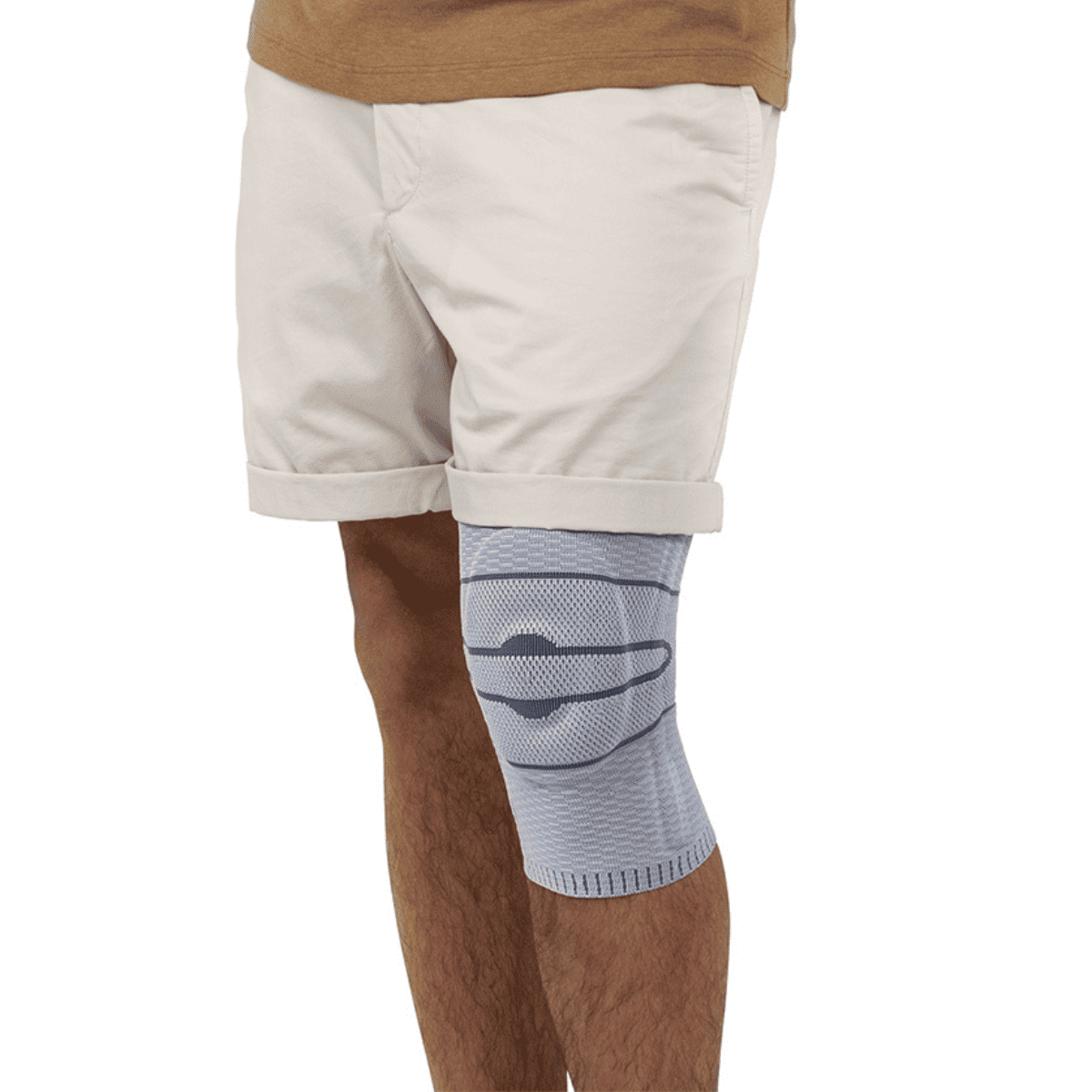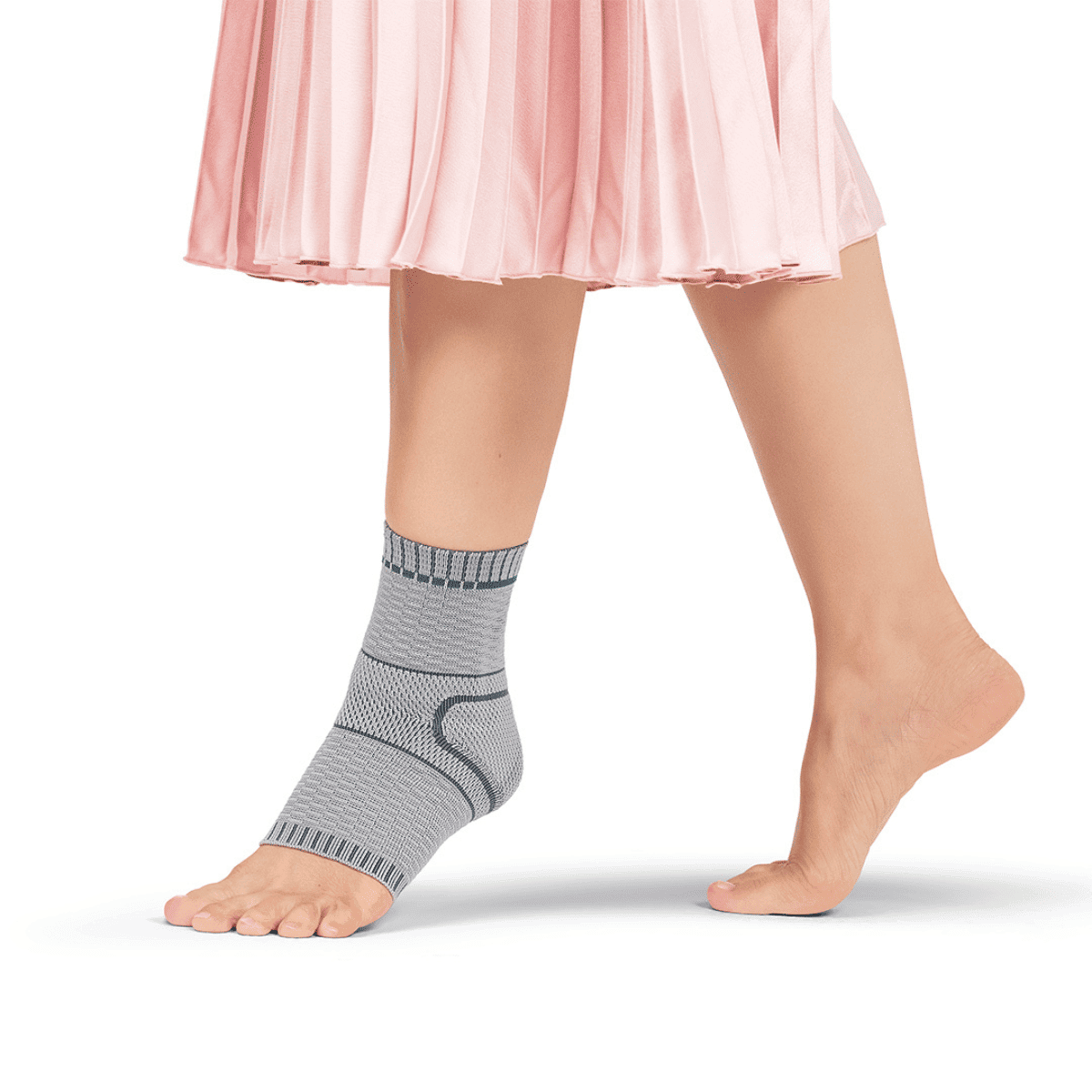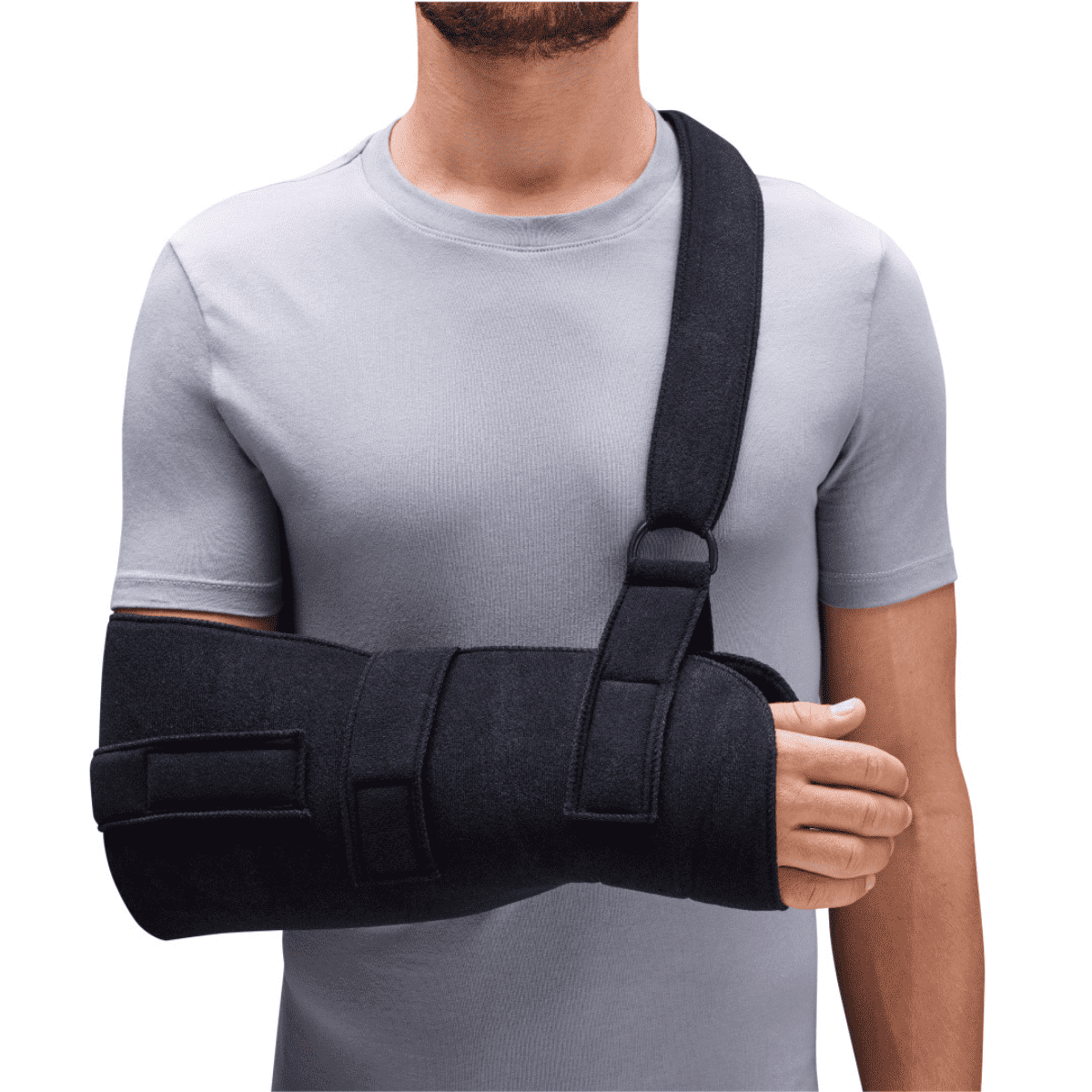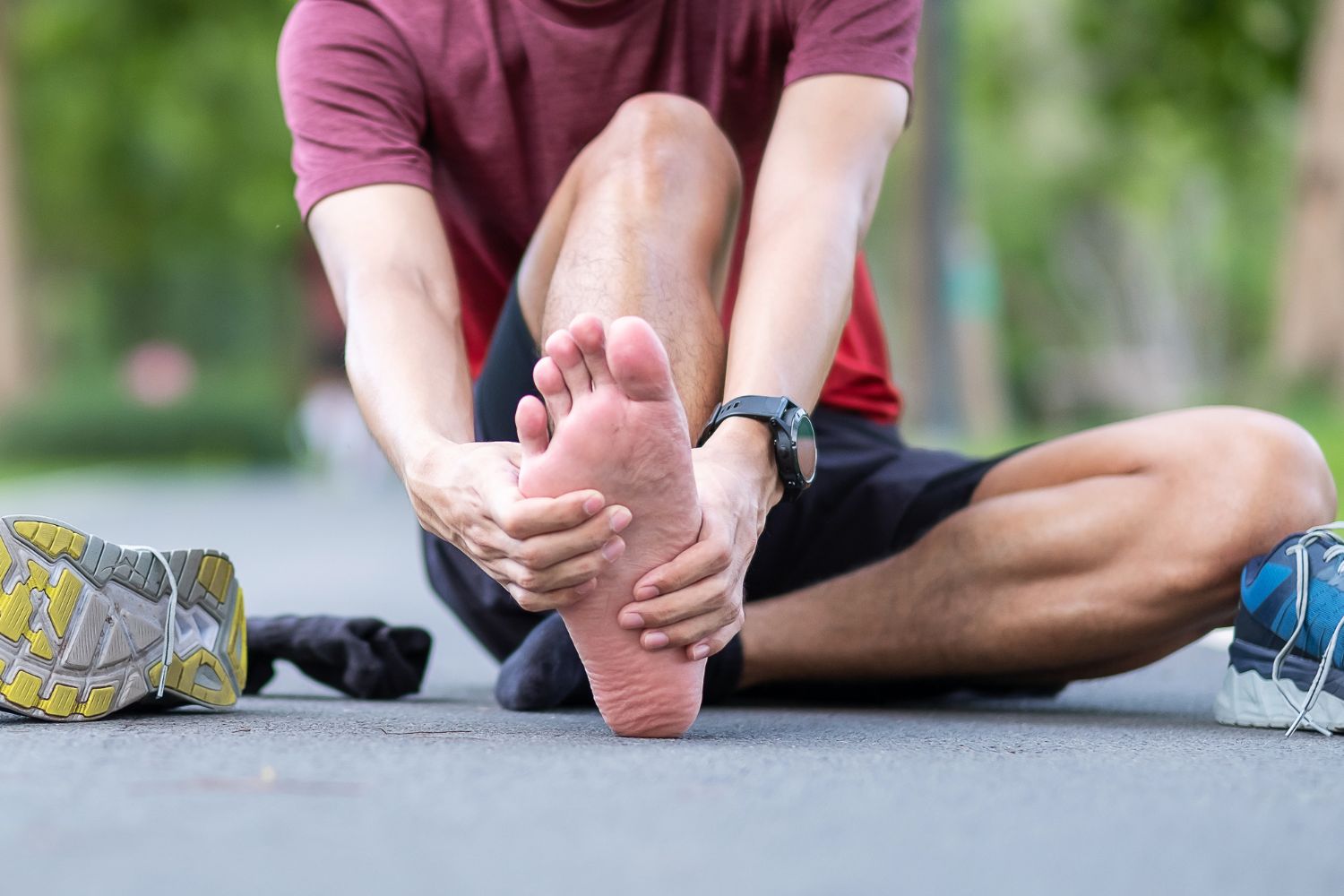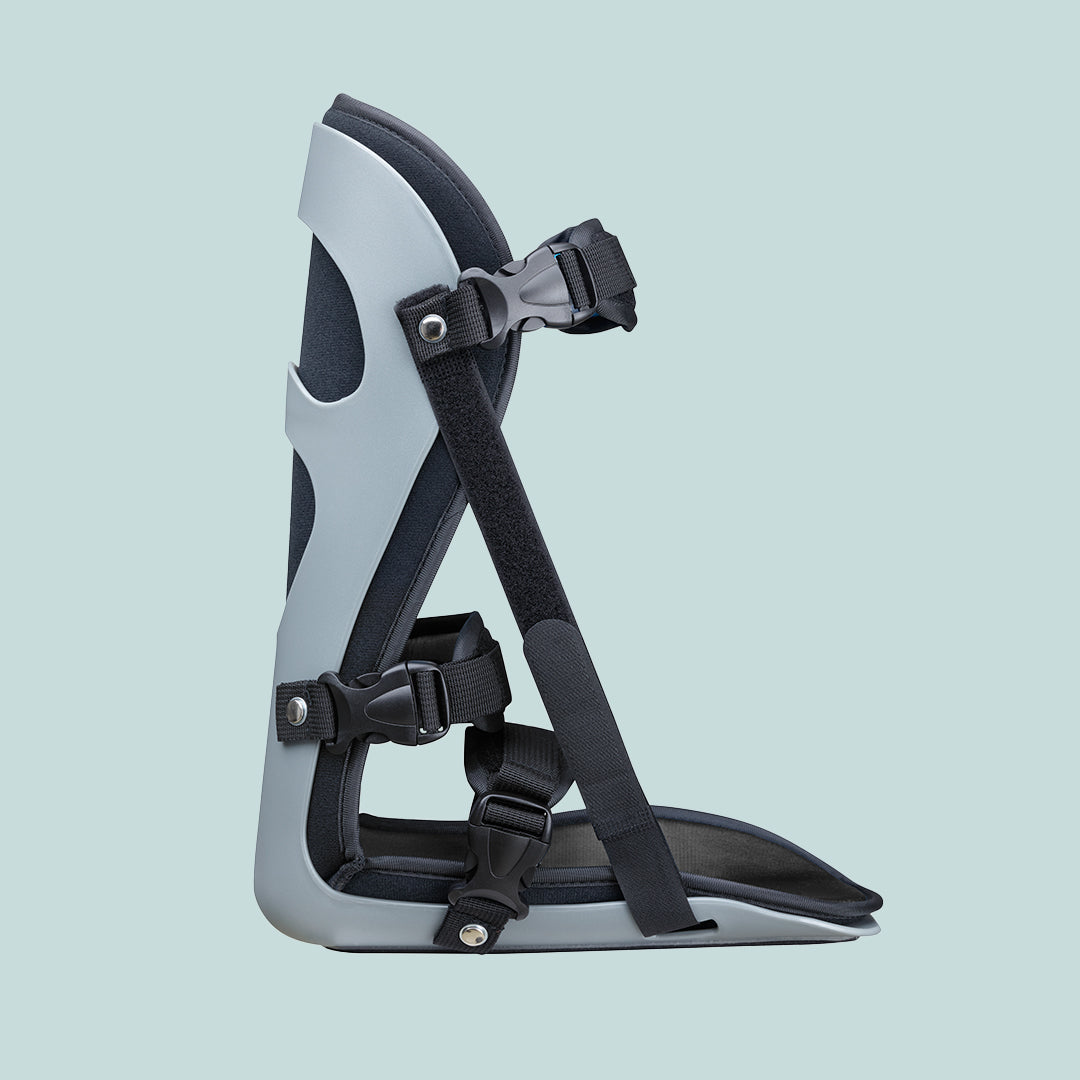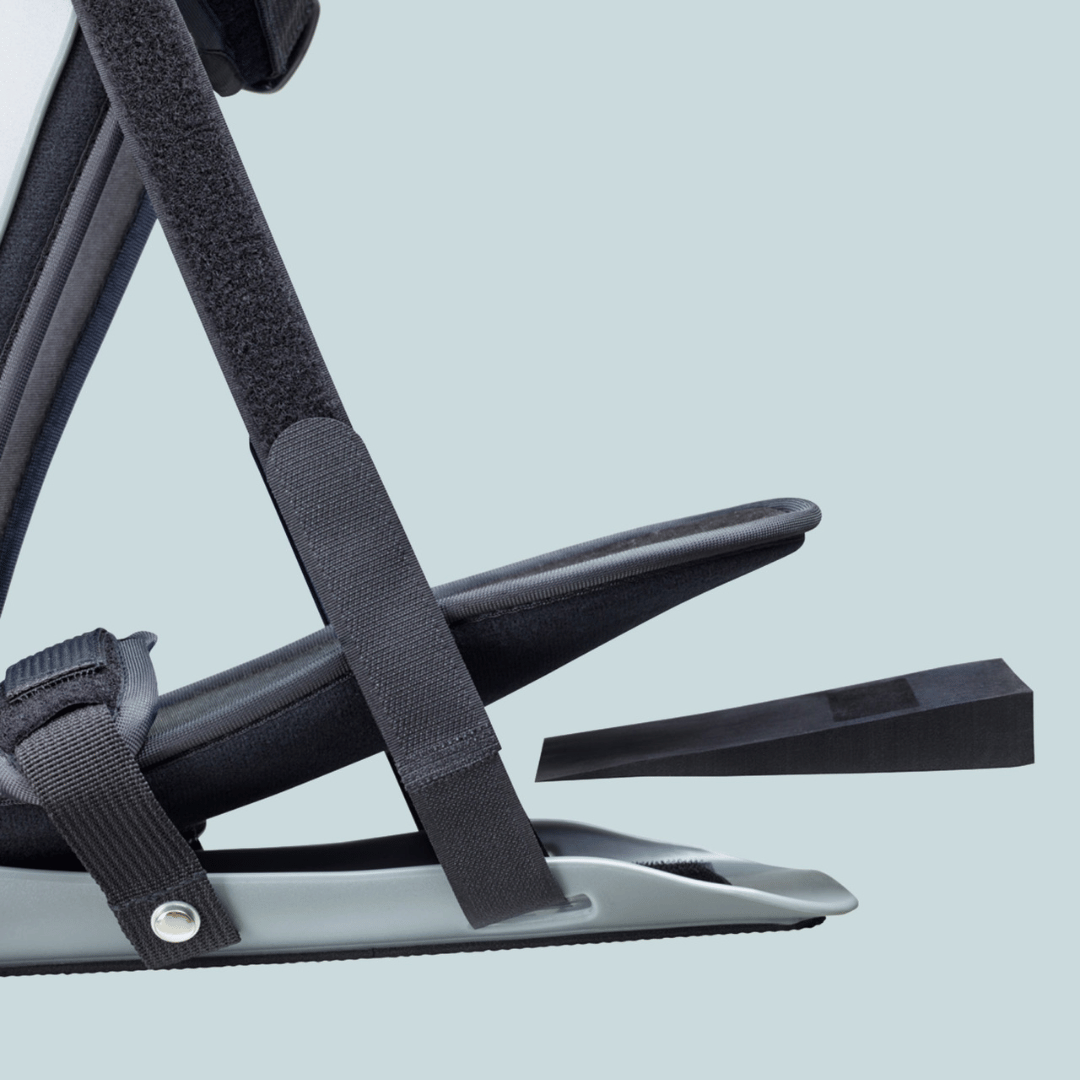Plantar fasciitis symptoms can range from irritating to debilitating. If you don’t address the condition properly, it could become chronic. So, if you’re looking for relief from sharp, stabbing heel pain and inflammation, here is how to treat plantar fasciitis at home (and when to seek medical care).
POLICE
This acronym stands for:
- Protection: Protecting the injury with a brace, splint, or support.
- Optimal Loading: Physiotherapy exercises to improve flexibility and. maintain strength.
- Ice: Icing the area for a few minutes to relieve inflammation.
- Compression: Compressing the area with a support or wrap to reduce inflammation and boost blood flow.
- Elevation: Elevating the leg helps with swelling.
For an injury like plantar fasciitis, POLICE may be better than traditional RICE since long rest periods cause the injured fascia to constrict.
Exercises for Plantar Fasciitis self-care
While it seems counterintuitive to exercise a hurting body part, studies show that gentle stretching and strengthening exercises will help you find relief and work toward minimising the risk of reoccurring plantar fasciitis. Here are the best ones to try:
Seated towel stretch
- Sit on the floor with your injured leg stretched in front of you.
- Loop a towel or a resistance band around the ball of your injured foot.
- Hold the ends of the towel or band with both hands and gently pull your foot towards you, keeping your knee straight.
- Hold the stretch for 15-30 seconds. If you feel pain during the stretch, try to decrease its intensity or take a break.
- Relax and repeat 3 times.
Wall calf stretch
- Stand upright, facing a wall.
- Place your hands on the wall at around eye level. Your elbows should be straight.
- Bend the knee of your uninjured foot and step your injured foot back, ensuring that the knee is straight and your heel can touch the floor.
- While keeping your heel on the floor and knee straight, slowly bend your elbows and lean your body forward. You should feel a stretch along your calf.
- Hold the position for 20-30 seconds.
- Relax and repeat 3 times.
Step-up arch extensions
- Stand at the edge of a stair or exercise step so your heels hang over the edge.
- Make sure you have something nearby to hold on to, such as a chair, railings, or a wall.
- Lift your uninjured foot so you’re balancing on one leg.
- With the injured foot, slowly stand up on your toes like you’re going into a calf raise.
- Hold the position for 2-3 seconds, then lower yourself back down.
- Instead of stopping when your heel is level with the step again, progress through the movement by dropping your heel down as far as is comfortable.
- Hold the position for 2-3 seconds, then bring yourself back up again.
Night splint for plantar fasciitis
b:joynz Night Splint
Plantar fasciitis pain tends to be at its worst right after a long rest period, like sleeping. That’s because the inflamed plantar tissues shorten when not in use, so stretching them again—even if it's just to walk—can really irritate them.
Our plantar fasciitis night splint holds the toes in a slightly stretched position, preventing the fascia from tightening to begin with, so you don’t risk damaging the tissues when you’re up and about again.
The b:joynz night splint has some added benefits, including additional straps and a forefoot wedge so you can adjust the level of dorsiflexion.
Quick-release clasps make donning and doffing easier, and the brace’s cushioned lining ensures a comfortable sleep.
Adequate foot support
In addition to wearing a splint at night, wear supportive shoes or insoles during the day. Combining different mechanical supports for your condition will lead to better treatment effects.
Generally, sports shoes with a stiff but well-cushioned insole will be enough to support your steps. If your plantar fasciitis is more severe, you can try an insole specific to the condition or rocker shoes to reduce more plantar pressure as you walk.
Shoes with a slight heel (2-3 cm) and good arch support can also help. However, avoid wearing high heels, as they put pressure on the heel and overstretch the fascia.
Over-the-counter pain relief
Over-the-counter NSAIDs can help relieve some of the pain and inflammation associated with plantar fasciitis.
You should keep in mind that pain relief medications help against symptoms but don’t address the underlying issue. That’s why it’s important to combine them with active therapies like stretching and splinting for the best results.
When to see a doctor
When the pain starts, head to your GP for diagnosis and appropriate treatment. You should also seek professional advice and treatment if symptoms worsen and/or you start experiencing burning or tingling sensations.
Plantar Fasciitis Self-Care Tips: The Takeaway
The good news is that up to 90% of people with plantar fasciitis recover without surgical intervention within 3-6 months. So, make sure to POLICE, wear a night splint, wear supportive shoes, and stretch. These steps are essential to relieving pain and inflammation and helping your fascia heal.

